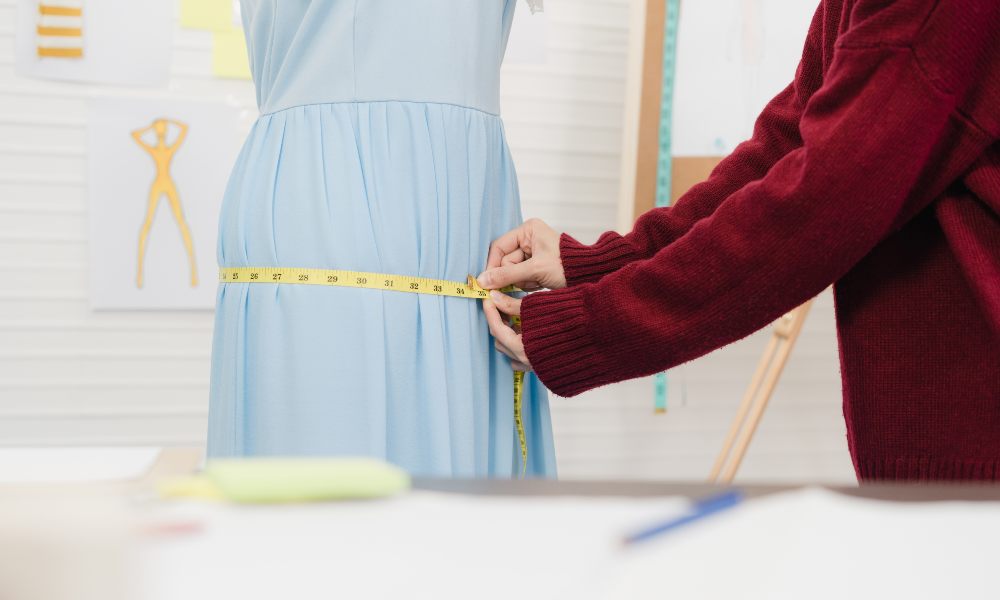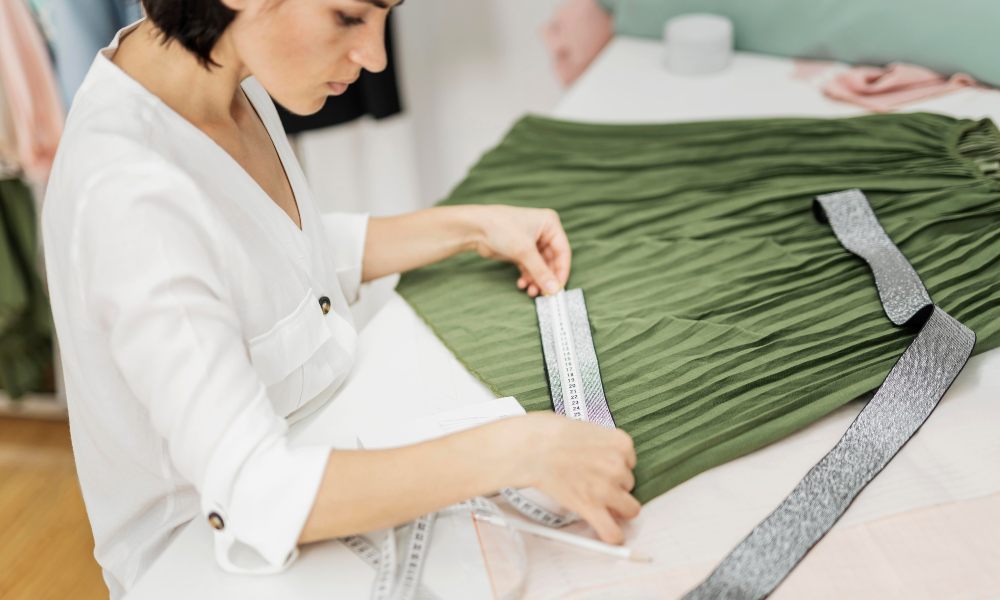Are you yearning to craft a skirt that exudes sophistication and flair? Unleash your inner fashionista and indulge in the art of skirt sewing! Whether you’re a seasoned stitcher or a novice needleworker, this comprehensive sewing tutorial will empower you to create elegant, custom-fitted skirts that elevate your wardrobe to new sartorial heights. Prepare to unlock the secrets of pattern mastery, fabric finesse, and embellishment expertise – all the tools you need to sew skirts that are the envy of your peers.
Understanding Skirt Patterns
Decoding the Geometry of Grace
Before you can commence your stitching sojourn, you must first grasp the intricacies of skirt patterns – the blueprints that dictate a skirt’s silhouette and structure. The skirt sewing patterns are designed with great attention to detail and offer a variety of shapes and styles, each with its own individual charm.
Circle Skirts: A Swirl of Elegance
Circle skirts, as their name implies, are crafted from circular pattern pieces that flare out from the waistline, creating a mesmerizing twirl with every stride. This vintage-inspired design is a perennial favorite, offering a perfect blend of femininity and movement.
Pencil Skirts: Slim and Chic
For those seeking a more streamlined silhouette, pencil skirts are the epitome of sophisticated simplicity. Hugging the body’s curves with precision, these skirts exude a timeless, polished aesthetic that seamlessly transitions from the office to after-hours engagements.
Gathered Skirts: Playful Pleats
Embracing a romantic, whimsical flair, gathered skirts employ a wealth of pleats or gathers to create a voluminous, free-flowing silhouette. Whether you opt for a maximalist approach or a more subdued take, these gathered skirts are a delightful canvas for self-expression.
Gathering Your Sewing Arsenal
The Fabrics That Breathe Life
Selecting the ideal canvas for your sartorial masterpiece is comparable to picking the appropriate fabric. Consider the weight, drape, and texture of the material, as each characteristic will influence the skirt’s overall aesthetic and wearability. For circle skirts, lightweight fabrics like chiffon or georgette offer the perfect amount of flutter and movement. Pencil skirts demand sturdy, structured materials such as wool or cotton twill to maintain their sleek lines. And for gathered skirts, flowing fabrics like rayon or satin lend themselves beautifully to the cascading folds. If you’re feeling adventurous, explore custom fabric printing to create truly one-of-a-kind skirts.
Mastering the Notions: Threads, Zippers, and More
Beyond the fabric itself, an array of notions – those essential sewing accoutrements – will become your trusted companions throughout the skirt-making process. Each element is essential in enhancing the quality of your skirt’s construction, whether it’s the durable threads that add resilience to your stitches or the zippers that provide a refined finish. The interfacing provides shape and support, further enhancing the craftsmanship of your skirt.
Prepping the Pattern Pieces

Precise Measurements: The Foundation of Flawless Fit
Before you can wield your needle and thread, you must first ensure that your pattern pieces are tailored to your unique measurements. This meticulous process guarantees a skirt that flatters your form and moves with grace.
Waist Radius: Navigating the Curves
One oft-overlooked aspect of skirt sewing is the waist radius – the gentle curve that hugs your natural waistline. Accurately mapping this contour is key to achieving a comfortable, flattering fit that doesn’t constrict or gap.
Length: Floor-sweeping or Knee-skimming?
The length of your skirt is a matter of personal preference and occasion. Will you be crafting a romantic, floor-sweeping maxi skirt, or a playful, knee-skimming mini? Decide on your desired hemline and adjust your pattern pieces accordingly, ensuring a balanced and proportionate final product.
Stitching Steps Simplified
Aligning the Pattern Puzzle
With your pattern pieces prepped and your fabrics chosen, it’s time to commence the stitching odyssey. Begin by meticulously pinning and aligning your pattern pieces, treating each step with the utmost precision and care.
Seam Sorcery: Taming the Raw Edges
As you stitch your skirt pieces together, you’ll encounter raw edges – those frayed, unfinished seams that can unravel and detract from your garment’s polished appearance. Fear not, for there are several techniques at your disposal to tame these unruly edges.
French Seams: Couture’s Best-Kept Secret
Favored by haute couture designers, French seams are a simple yet ingenious method of enclosing raw edges within a neat, self-bound seam. This technique not only lends a professional, finished look but also enhances the durability of your skirt.
Zigzag Stitches: A Frayed Edge’s Foe
For a more casual approach, zigzag stitches offer a reliable solution for sealing raw edges. This versatile stitch creates a dense, interlocking pattern that effectively prevents fraying and unraveling, ensuring your skirt maintains its integrity through countless wears.
Embellishments and Finesse
Waistbands: Cinching Perfection
Once your skirt pieces are stitched together, it’s time to add the finishing touches that elevate your creation from ordinary to extraordinary. A well-crafted waistband not only provides a polished, tailored look but also ensures a comfortable, secure fit. For a casual vibe, consider an elastic waistband or a simple casing for a drawstring. Alternatively, a sleek, interfaced waistband can lend a sophisticated air to your skirt.
Decorative Detailing: Buttons, Belts, and Beyond
For those seeking to infuse their skirts with a touch of whimsy and individuality, decorative detailing offers a world of possibilities. From playful buttons and buckles to intricate embroidery or appliqué, these embellishments allow you to showcase your unique style and creativity. A simple wrap skirt pattern can be transformed into a fashion-forward statement piece with the right accents.
FAQ
What is the best type of fabric for sewing a skirt?
The ideal fabric choice depends on the skirt style. For circle or gathered skirts, lightweight fabrics like chiffon or rayon work well. Pencil skirts require sturdy materials like wool or cotton twill. Knit fabrics are great for elastic waist skirts.
How do I determine the right seam allowance?
Most skirt patterns recommend a 5/8″ seam allowance, but check the specific pattern instructions. A smaller 1/4″ seam allowance may be used for curved areas like the waistline.
Can I sew a skirt without a pattern?
Yes, you can draft a simple skirt pattern yourself by taking body measurements and using geometric shapes like rectangles or circles. Many free sewing patterns are also available online.
How do I sew an even hem?
Use a hem gauge or deterring chalk to mark the desired length. Try the skirt on and adjust as needed before stitching the hem with a straight stitch or blind stitch.
How do I insert an invisible zipper?
Use an invisible zipper foot on your sewing machine. Stitch the zipper in with a zipper foot, ensuring the teeth are fully concealed in the seam.
The Final Flourish
Pressing and Preening Your Creation
As you approach the final stages of your skirt-making journey, it’s essential to tend to the minute details that separate a well-made garment from a truly extraordinary one. Carefully press and steam your skirt, ensuring that seams lie flat and fabric drapes gracefully.
Will your handcrafted skirt be the star of your wardrobe?
With your newly acquired sewing prowess and this comprehensive guide at your fingertips, you are poised to create skirts that not only turn heads but also ignite your passion for the art of stitchery. So, take up your needle and thread, and let your creativity soar – for the world is your runway, and your handcrafted skirt is destined to be the star of your wardrobe. What captivating design will you bring to life next?
***
Main image: freepik




